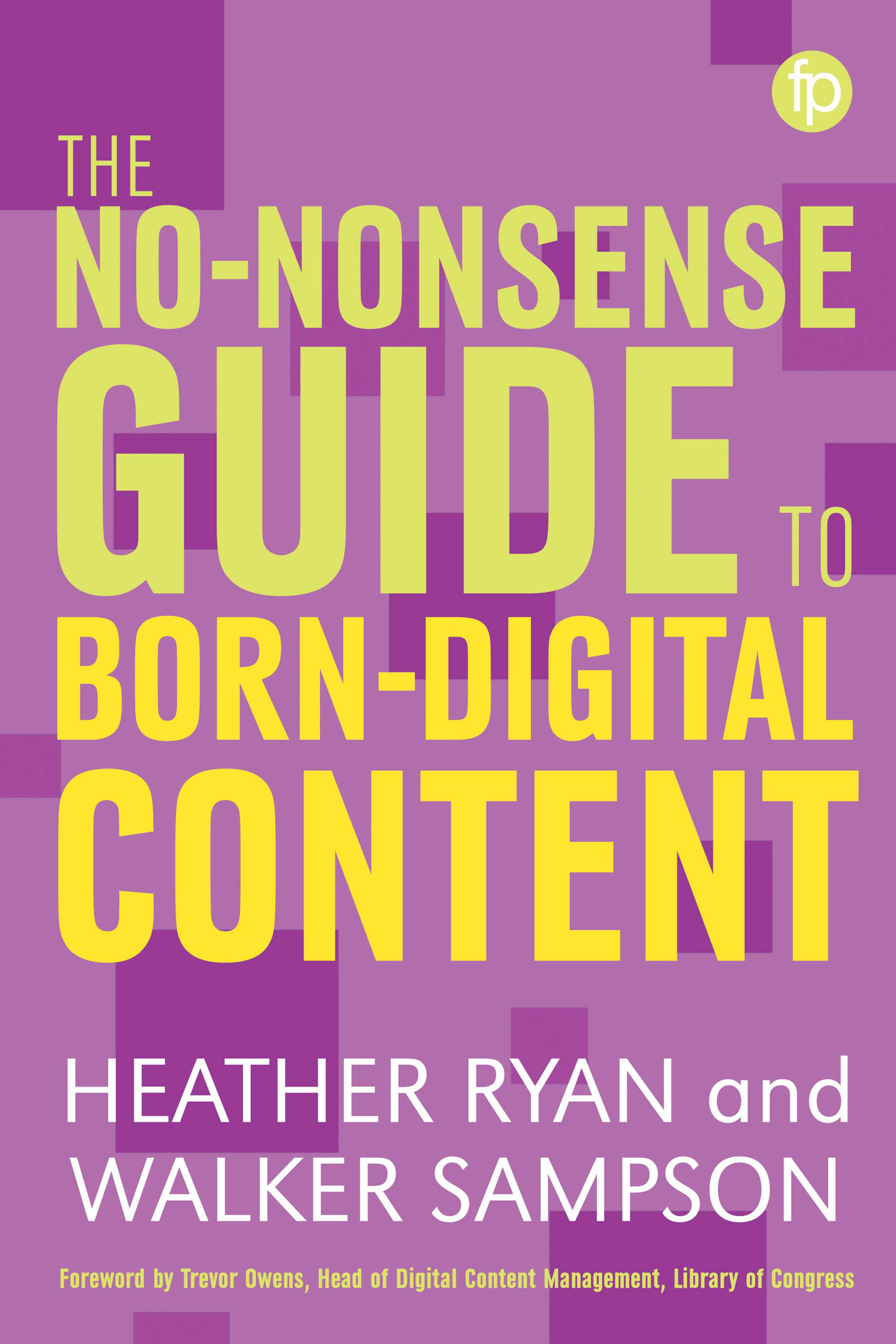
Primary tabs
You don't need to be an ALA Member to purchase from the ALA Store, but you'll be asked to create an online account/profile during the checkout to proceed. This Web Account is for both Members and non-Members. Note that your ALA Member discount will be applied at the final step of the checkout process.
If you are Tax-Exempt, please verify that your account is currently set up as exempt before placing your order, as our new fulfillment center will need current documentation. Learn how to verify here.
- Description
- Table of Contents
- About the authors
- Reviews
Winner of the 2019 Preservation Publication Award from the Society of American Archivists (SAA)
Libraries and archives of all sizes are collecting and managing an increasing proportion of digital content. Within this body of digital content is a growing pool of ‘born-digital’ content: content that has been created and has often existed solely in digital form. Providing continued, sustainable access to a wide array of born-digital content is a challenge for libraries and archives, particularly because of the broad and highly technical skills needed to build and sustain born-digital content management workflows.
The No-Nonsense Guide to Born Digital Content provides an entry level how-to guide that aims to help ease inexperienced students and practitioners into this area. It explains step by step processes for developing and implementing born-digital content workflows in library and archive settings of all sizes and includes a range of case studies collected from small, medium and large institutions internationally. Coverages includes:
- the wide range of digital storage media and the various sources of born-digital content;
- an overview of digital information basics;
- selection, acquisition, accessioning, and ingest;
- description, preservation, and access;
- methods for designing and implementing workflows for born-digital collection processing;
- a comprehensive glossary of common technical terms; and
- strategies and philosophies to move forward as technologies change.
Foreword - Trevor Owens
Introduction
- What is born-digital content?
- Why is this important?
- About the book
- Additional resources
- Representing the world of libraries and archives
1. Digital information basics
- What is digital information?
- Hexadecimal
- Digital file types
- Storage media
- Command line basics
- Code repositories
- Conclusion
- Further reading
2. Selection
- Types of born-digital content
- Format- versus content-driven collecting decisions
- Mission statements, collecting policies, and donor agreements
- Gift agreements
- Stanford University’s approach to selection in web archiving
- Conclusion
- Further reading
3. Acquisition, accessioning and ingest
- Principles in acquisition
- Acquisition of born-digital material on a physical carrier
- Checksums and checksum algorithms
- Acquisition of network-born materials
- Accession
- Ingest
- Conclusion
- Further reading
4. Description
- General fields and types of information
- Descriptive standards and element sets
- General element sets
- Descriptive systems
- Use cases
- Conclusion
- Further reading
5. Digital preservation storage and strategies
- A note on acquisition
- A note on file formats
- Thinking about storage
- Certification
- Digital preservation policy
- Conclusion
- Further reading
6. Access
- Deciding on your access strategy
- Methods of access
- Use case
- Conclusion
- Further reading
7. Designing and implementing workflows
- A note on tools
- Design principles
- Workflow and policy
- Examples
- Case study
- Conclusion
- Further reading
8. New and emerging areas in born-digital materials
- Technology in general
- Storage
- Software and apps
- Cloud technologies
- Smartphones
- Digital art and new media
- Emerging descriptive and access methods
- Growing your skills
- Conclusion
- Further reading
Conclusion
Appendix A – Resources
Appendix B - Basic unix command line prompts
Heather Ryan
Heather Ryan is Assistant Professor, Director of Special Collections & Archives at the University of Colorado, Boulder.
Walker Sampson
Walker Sampson is Assistant Professor, Special Collections & Archives at the University of Colorado, Boulder.
"Take this book as the starting point of a journey into our community of practice and realize that you are not alone. Even if it really is just you working on digital preservation as a lone arranger at a small organization the rest of us are out here working away at the same problems."
— Trevor Owens, Head, Digital Content Management, Library of Congress
"Ryan and Sampson (both, Univ. of Colorado Boulder Libraries) achieve their goal in providing basic, practical advice for librarians and archivists dealing with born-digital content ... there is value for everyone in the well-reasoned discussions about overarching strategies, policies, and processes, which are necessary before any of the capturing and processing of resources can begin."
— CHOICE
"Ryan and Sampson provide many resources and verbatim examples of policies, workflows, donor agreements, case studies, and models, reminding us that collaboration is key in doing the most we can with what we have ... Provides the tools, including the confidence, necessary to go forth saying that yes, you too can do this!"
— Archival Issues


